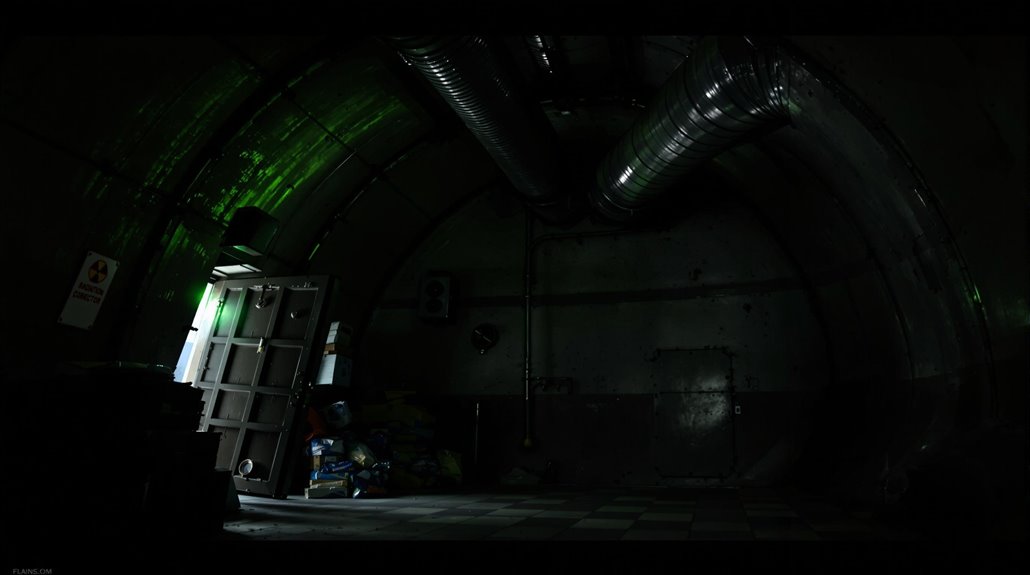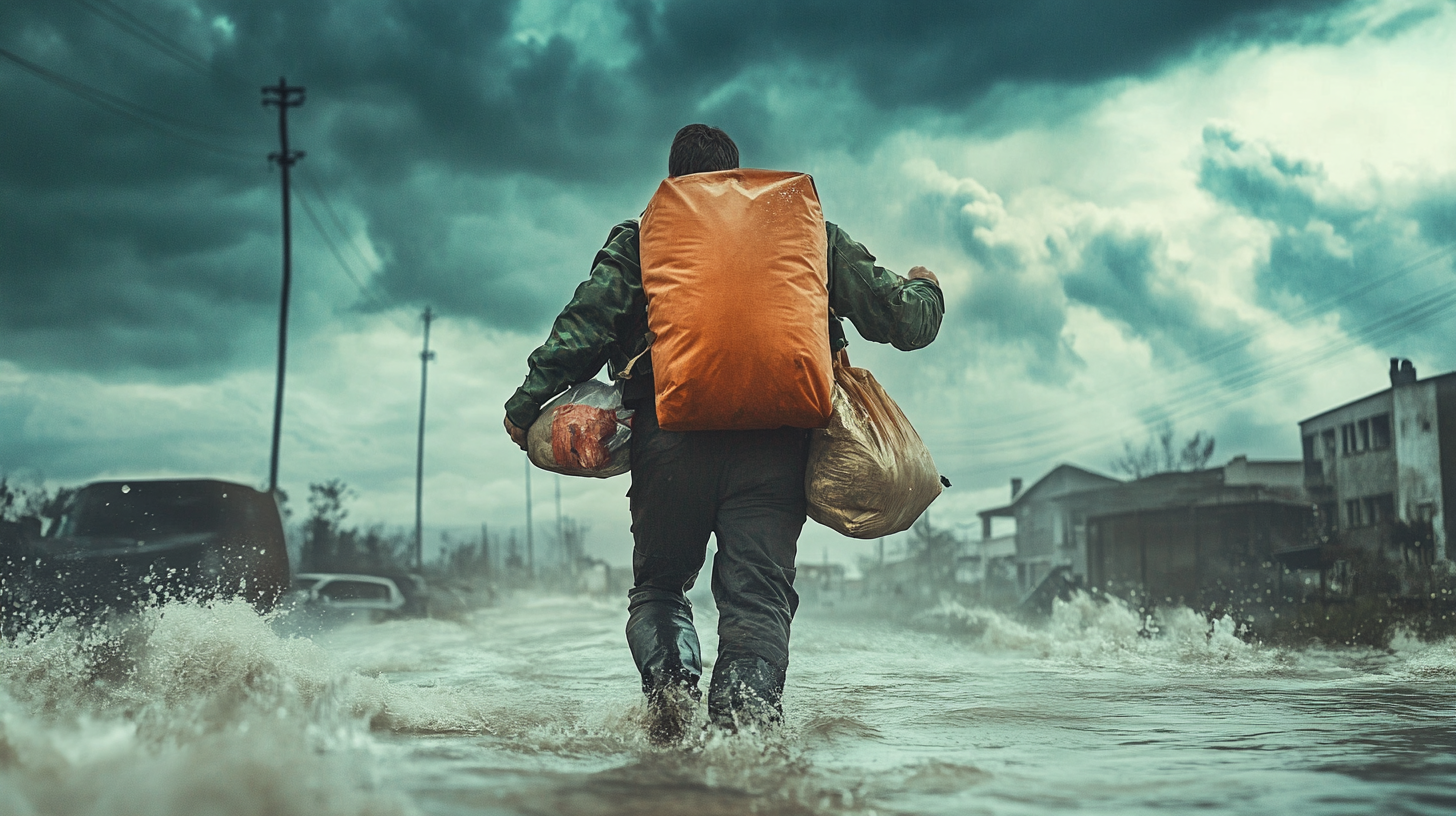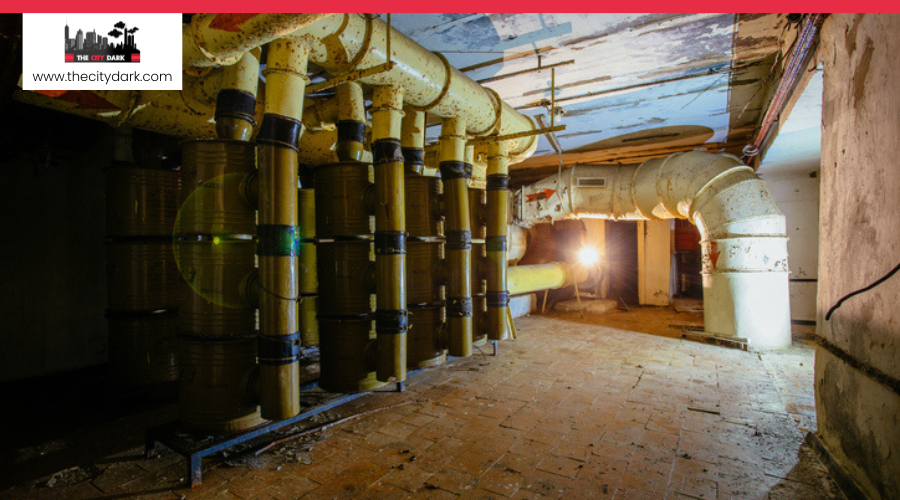How Long Do People Stay in Bomb Shelters?
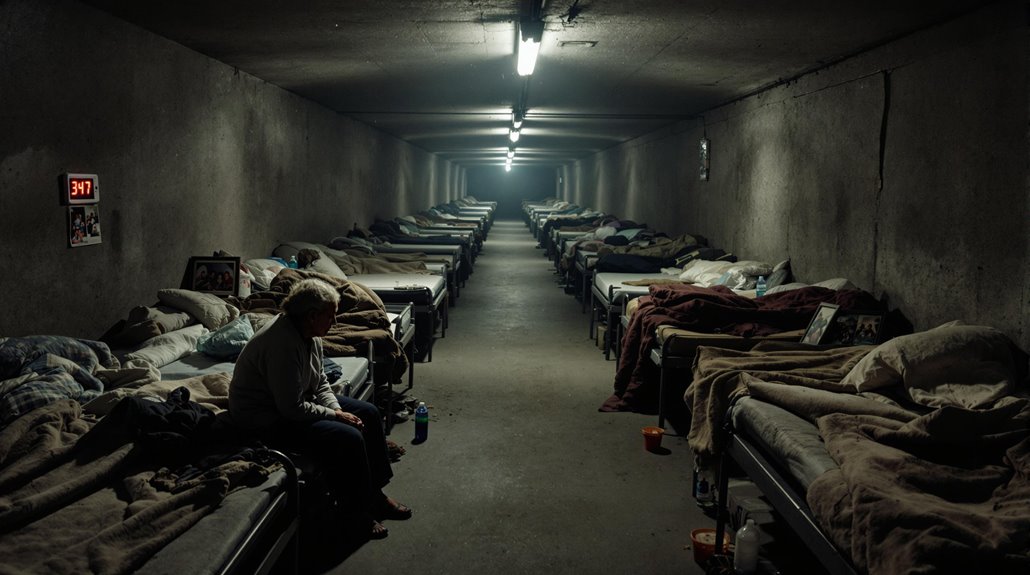
You'll need to stay in a bomb shelter for at least 48 hours after a nuclear event, as this allows the most lethal fallout to lose 99% of its intensity. However, experts strongly recommend a 30-day shelter period for maximum safety, since radiation levels can remain dangerous for weeks. Your shelter's location, construction type, and available supplies will determine how long you can safely remain protected.
Understanding the specific factors that affect shelter duration can make all the difference in your survival.
Understanding Nuclear Fallout Patterns
Why does understanding fallout patterns matter when seeking shelter from nuclear detonations? Nuclear fallout consists of particles ranging from microscopic to visible sizes that can threaten your safety. You'll need to know that larger fallout particles settle within 24 hours near ground zero, while tiny particles can stay airborne for months or years, spreading radiation exposure across vast areas.
Weather plays a pivotal role in determining your radiation dose. Strong winds can expand the fallout patterns, while thunderstorms can create dangerous hotspots through rapid particle washout. When deciding how long to stay in fallout shelters, you'll need to monitor both local and global fallout distribution. Different radioactive isotopes behave uniquely, affecting radiation levels in your area.
Understanding these patterns helps you make informed decisions about shelter duration and eventual emergence timing. Underground bunkers provide the most effective protection against these dangerous fallout patterns, featuring essential air filtration systems to remove contaminated particles.
Critical Timeframes for Shelter Occupation
When considering survival in a nuclear event, understanding critical shelter timeframes can mean the difference between life and death. You'll need to stay in bomb shelters for at least 48 hours, as fallout loses 99% of its lethal intensity during this period, considerably reducing your risk of radiation sickness.
While fallout drops 90% of its lethal intensity within 7 hours, experts recommend a 30-day shelter occupation period for maximum safety. This timeframe allows background radiation to decrease to safer levels. However, your shelter's location matters - if you're within 1 mile of a nuclear blast, you can survive in properly engineered bomb shelters, but direct hits aren't survivable.
The type of shelter also influences exit timing, with blast-resistant shelters allowing earlier departure compared to basic fallout shelters. Unlike basic storm shelters, survival bunkers provide comprehensive protection with long-term living facilities for extended shelter periods.
Essential Supplies and Resources
Surviving a lengthy shelter stay requires careful planning and stockpiling of essential resources. You'll need a 30-day supply of food, water, and potassium iodide tablets to protect your bone marrow from radiation emitted by nuclear weapons. Your underground bunker should be equipped with reliable generators housed in sealed, ventilated rooms to maintain power throughout your stay.
As radioactive particles settle after detonation, you'll need to monitor radiation dose levels to determine when it's safe to exit. Your shelter's emergency escape hatches and ladders will provide a crucial exit route once the 30-day period has passed. While your bunker won't protect you from a direct hit, it's designed to shield you from fallout if you're within a one-mile radius of the blast zone. Keep non-perishable food items like canned goods and energy bars stored in waterproof containers to maintain their integrity during extended shelter stays.
Monitoring Radiation Levels
Monitoring radiation levels accurately is essential for determining when it's safe to leave your shelter. You'll need both low-range and high-range geiger counters to detect radiation from nuclear explosions and radioactive material. While low-range meters track background levels, high-range devices warn you of life-threatening dose rates.
- Check gamma dose readings against the Nuke Alert chart to determine safe shelter duration
- Use barrier units to test how effectively your shelter's materials block radiation
- Place dosimeter cards at key points to visually monitor exposure levels without electronics
- Get your detection equipment professionally calibrated every 10 days for accurate readings
Understanding fallout outside your shelter is pivotal for survival. Your radiation monitoring tools must be reliable and properly calibrated to make informed decisions about shelter duration and evacuation timing. A shelter's electronic monitoring equipment may be compromised by electromagnetic pulses from nuclear detonations up to 900 miles away.
Shelter Design and Safety Features
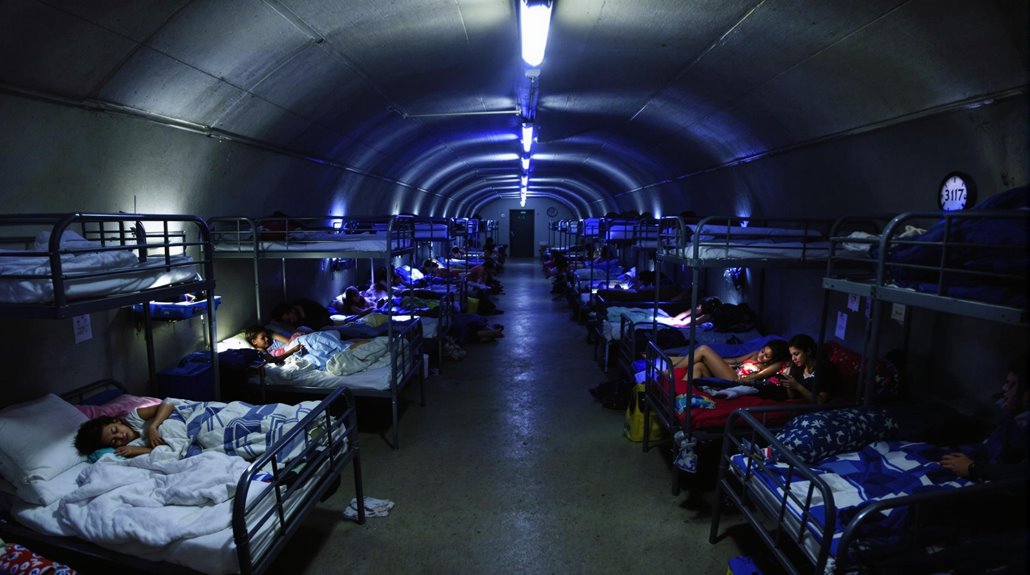
Modern bomb shelters incorporate sophisticated design elements that verify both survival and livability during extended stays. You'll find these bunkers buried 36-72 feet underground, providing critical protection from both the initial blast wave of a nuclear explosion and subsequent fallout. The structures are engineered to withstand multiple types of loads while maintaining their integrity against nuclear weapons effects.
You're protected by military-grade air filtration systems that keep your environment safe from radiation and contaminants. The shelter's power system automatically switches between solar, diesel generators, and grid power to confirm continuous operation. For your safety, you'll have access to sealed, ventilated rooms for generators and emergency escape hatches. These features allow you to stay safely underground for at least 30 days while external conditions normalize.
Power Systems and Ventilation Requirements
The reliable operation of power and ventilation systems determines your survival during an extended shelter stay. You'll need backup power options like diesel generators and solar panels to maintain critical life-support functions. The shelter's sealed ventilated rooms house these power systems while protecting you from external threats.
Your shelter's air filtration systems must include military-grade upgrades to safeguard against various threats:
- Radioactive particles from a nuclear event
- Chemical agents that could compromise air quality
- Biological contaminants that pose health risks
- Airborne debris that could enter ventilation systems
During the pivotal first 48 hours after a nuclear event, these systems work together to keep you alive. Modern ventilation systems can sustain life for up to 30 days, automatically switching between power sources to maintain continuous operation of all critical systems.
Communication During Extended Shelter Stays

Maintaining reliable contact with the outside world could mean the difference between life and death during your shelter stay. You'll need multiple communication options, including satellite phones, two-way radios, and internet-connected devices to make certain you're never completely cut off from indispensable information and rescue services.
Your shelter's communication station should be equipped with backup power sources and signal enhancers to sustain connectivity even in challenging conditions. These tools help overcome potential interference from thick shelter walls or disrupted infrastructure. You'll want to establish regular check-ins with emergency authorities and family members to keep them informed of your status and any urgent needs. Remember to conserve power when possible, but don't compromise on essential communications that could impact your safety or rescue timeline.
Health Considerations Underground
Safety in underground shelters extends far beyond just protection from external threats. While underground bunkers shield you from radiation from fallout and radioactive particles, you'll need to monitor several health factors during your stay.
- You must maintain proper air filtration systems to prevent dangerous buildup of radon and carbon dioxide, which can become lethal in confined spaces.
- You'll need adequate medical supplies and radiation detection equipment to treat potential radiation sickness.
- The first 48 hours are pivotal, as staying sheltered during this period reduces your radiation exposure by 99%.
- Your mental health requires attention too, as extended periods underground can trigger claustrophobia and depression.
For optimal safeguarding, you should prepare to stay sheltered for at least 30 days, ensuring you have sufficient resources for long-term survival underground.
Planning Your Exit Strategy

Planning a safe exit from your shelter requires careful consideration of both timing and conditions outside. During nuclear war survival, you'll need to understand that radioactive particles and gamma rays pose the greatest threat within the first two days after detonation. While your fallout shelter protects you from radioactive dust, you shouldn't rush to leave even after the initial 48-hour period.
The safest approach is to stay sheltered for 30 days, as this allows the fallout to lose 99% of its lethal intensity. However, if you must exit earlier, wait at least two days when radiation levels have substantially decreased. Before leaving, monitor external conditions if possible, and have a clear plan for where you'll go. Remember that your survival depends on making informed decisions about when it's truly safe to emerge.

